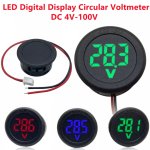Borislav@87
Active member
- Joined
- Mar 20, 2022
- Messages
- 440
- Points
- 43
@RedCowboy
I think it would be better if each row with 7 diodes has a separate power supply. Because that way I will avoid frequent battery charging and get more stable work. I will probably do a test of how it will be at 5A. That way I'll get more power at the expense of more heat. But in my case it is not a problem because this invention will be used in very short intervals of work. Probably, at 5A, a power of more than 100W will be obtained
I saw in a video that a guy used these drivers to run a 125W laser unit. I don't know if you have surveillance on them
DC 400W 15A Step-up Boost Converter Constant Current Power Supply LED Driver 8.5-50V to 10-60V Voltage Charger Step Up Module
I think it would be better if each row with 7 diodes has a separate power supply. Because that way I will avoid frequent battery charging and get more stable work. I will probably do a test of how it will be at 5A. That way I'll get more power at the expense of more heat. But in my case it is not a problem because this invention will be used in very short intervals of work. Probably, at 5A, a power of more than 100W will be obtained
I saw in a video that a guy used these drivers to run a 125W laser unit. I don't know if you have surveillance on them
DC 400W 15A Step-up Boost Converter Constant Current Power Supply LED Driver 8.5-50V to 10-60V Voltage Charger Step Up Module







